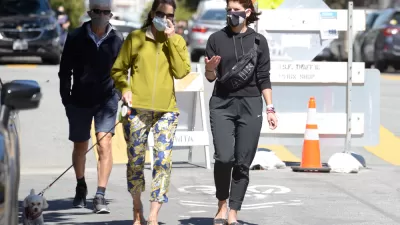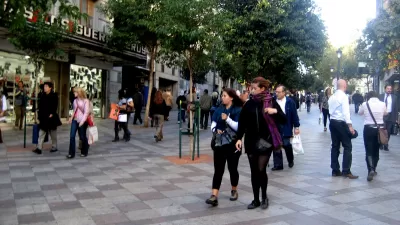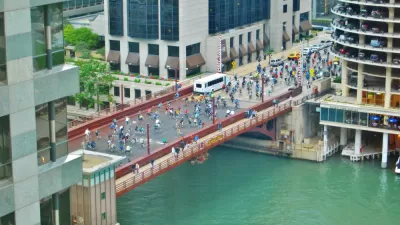Historical reports from the Regional Plan Association show that car-free streets is an idea almost as old as automobiles themselves.

A brief history of the Regional Plan Association’s research into road design and open streets highlights the deep roots of challenges cities still face today. Sidney Essex writes, “Recently, we unearthed from the RPA archives a New York Times article from 1928 that summarized a recommendation from the Regional Plan of New York and its Environs - also known as the First Regional Plan — about the inequity of pedestrian-free highways without parallel automobile-free urban streets.”
Almost a century later, advocates for open streets, including RPA, are making similar arguments. In 1928, RPA touted the economic benefits of open streets, pointing to the lower cost of building car-free streets. In their 2021 report, Re-Envisioning the Right of Way, they returned to economic benefits in a new way. “The research instead explored the potential of considering our shared streetscapes to be part of an integrated natural, transportation, and social system that can support local economies and food production.”
In 1928, RPA warned that giving up parts of residential streets to light industry leads to the loss of usable public space for pedestrians. “In 2021, RPA attempted to navigate this old tension between commerce and pedestrians by holding a symposium on the impacts and opportunities of e‑commerce in the region, which brought leading thinkers in the fields of supply chain management, transportation, land use, public finance, and waste management together to envision a region in which commerce is convenient, safe for pedestrians, and sustainable.”
FULL STORY: Open Streets Are an Old Idea Whose Time Has Come

Planetizen Federal Action Tracker
A weekly monitor of how Trump’s orders and actions are impacting planners and planning in America.

San Francisco's School District Spent $105M To Build Affordable Housing for Teachers — And That's Just the Beginning
SFUSD joins a growing list of school districts using their land holdings to address housing affordability challenges faced by their own employees.

The Tiny, Adorable $7,000 Car Turning Japan Onto EVs
The single seat Mibot charges from a regular plug as quickly as an iPad, and is about half the price of an average EV.

Seattle's Plan for Adopting Driverless Cars
Equity, safety, accessibility and affordability are front of mind as the city prepares for robotaxis and other autonomous vehicles.

As Trump Phases Out FEMA, Is It Time to Flee the Floodplains?
With less federal funding available for disaster relief efforts, the need to relocate at-risk communities is more urgent than ever.

With Protected Lanes, 460% More People Commute by Bike
For those needing more ammo, more data proving what we already knew is here.
Urban Design for Planners 1: Software Tools
This six-course series explores essential urban design concepts using open source software and equips planners with the tools they need to participate fully in the urban design process.
Planning for Universal Design
Learn the tools for implementing Universal Design in planning regulations.
Smith Gee Studio
City of Charlotte
City of Camden Redevelopment Agency
City of Astoria
Transportation Research & Education Center (TREC) at Portland State University
US High Speed Rail Association
City of Camden Redevelopment Agency
Municipality of Princeton (NJ)





























